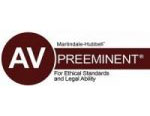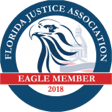Have you ever been injured in a car accident where the other party claimed you were at least partially at fault? Not all car accidents or other accidents are entirely the fault of one person. For example, if you were speeding and another driver switched lanes at the same time as you causing an accident, a jury might find you and the other driver both at fault. If this happens, can you still sue for injuries? In Florida, you may recover but the amount of your settlement or money award may be lessened by your own degree or percentage of fault. This is called comparative negligence.
Elements of a Car Accident Claim
Before you can sue anyone for an accident injury claim, you or your personal injury attorney has to prove certain elements or sets of facts:
- The party that caused the accident had a duty to exercise ordinary care to not injure or harm you
- The party who caused the accident breached or violated that duty
- The breach led to the accident
- Your injuries were caused by the accident
Anyone who drives a car has a duty to use ordinary or reasonable care so as to not injure other drivers, passengers, pedestrians or bicycle riders. The duty to use ordinary care is breached or broken when you violate a safety or traffic law such as speeding, driving erratically, not stopping at a stop sign or red light, or not keeping a safe distance behind a car.
If an accident occurs, your attorney will want to show that the other driver’s erratic driving or traffic violation caused the accident. If you are injured, the accident must have caused the injuries and not from some other event or incident like another accident that occurred before or after this car accident.
If Both Parties Are Responsible
In some states, you cannot recover if you are at fault for the accident to any degree, even if it is 1%. In other states, you cannot be more than 49% at fault. In other words, if both parties are equally to blame for the accident, then neither can recover any compensation at all for their injuries.
Florida is known as a pure comparative negligence state. This means that you may be able to recover money for your injuries so long as you can prove that another party was even 1% at fault.
In the previous car accident example, you may be found to be 40% at fault and the other party to be 60% responsible. Your damages may total $10,000, which includes losses that are economic and non-economic. Economic includes your out-of-pocket expenses such as medical expenses, wage loss, and damages to your car. Non-economic damages is pain and suffering and how your injuries from the accident have affected your life. Under pure comparative negligence rules, you can recover $6,000, since you were 40% responsible.
And if you were 95% at fault, you can still recover damages but only $500.
Why You Need an Experienced Injury Lawyer
In many car and other accident cases, the injured party is often blamed for contributing to the cause of the accident. For example, if you were harmed by a certain product, the manufacturer might claim that you did not use the product as it was supposed to be used. In a car accident, the other driver might argue that you were speeding or using your cell phone when the collision happened, even if the other driver made an unsafe lane change.
An experienced injury lawyer will work to lessen your degree of fault. Your attorney can do this by gathering and examining certain evidence, such as:
- The statements of the parties (one of the statements may not make much sense or conflict with other evidence)
- The physical damage to the cars ( the location of the damage can pinpoint where the cars were in relation to each other when the crash occurred
- Skid-marks (can show speed by measuring their length)
- Video surveillance at the intersection
- Checking a cell phone to see if a text was sent at or near the time of the crash
- Using the police accident report shows the other driver was drunk or on drugs
For other types of accidents, your lawyer may be able to show that a product was unsafe because it lacked proper warnings or instructions, did not have a protective cover, or was poorly designed. If your injury was from a slip and fall, then a photograph of the slippery, torn or broken surface can show that a dangerous condition existed and caused you to fall. In some of these cases, an expert can testify that the other party breached or broke its duty of care to you and that a reasonably careful party in the same position and under the same circumstances would have acted differently.
Contact the Brooks Law Group
Few accident claims are cut and dry. The Brooks Law Group handles all types of personal injury claims and has the skills and knowledge needed to fight for you. Whether you live in Lakeland, Tampa, Winter Haven or any surrounding city in Central Florida, give us a call at 1-800-LAW-3030 (1-800-529-3030) to receive a free consultation. We want to help!













